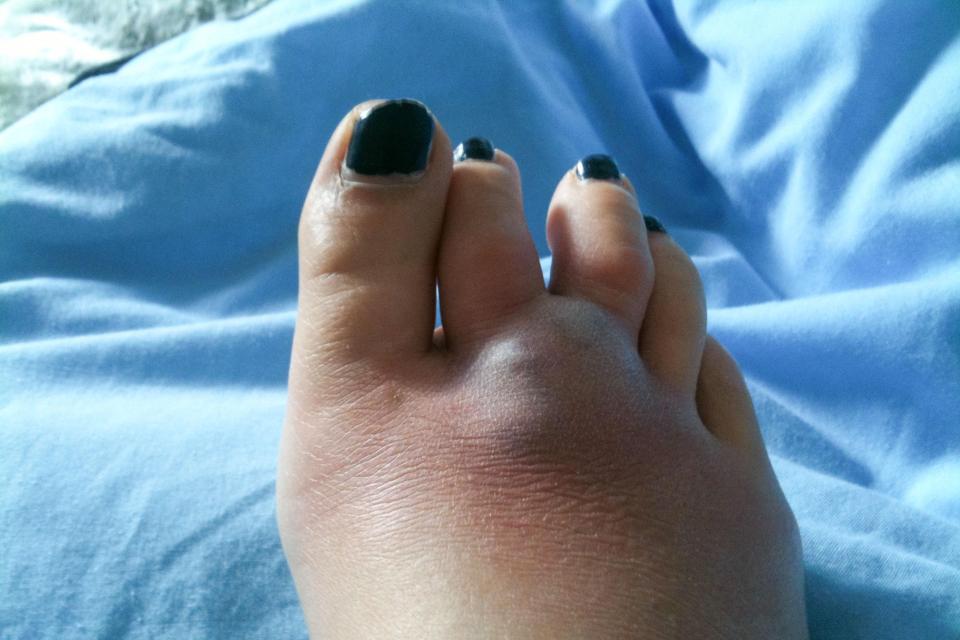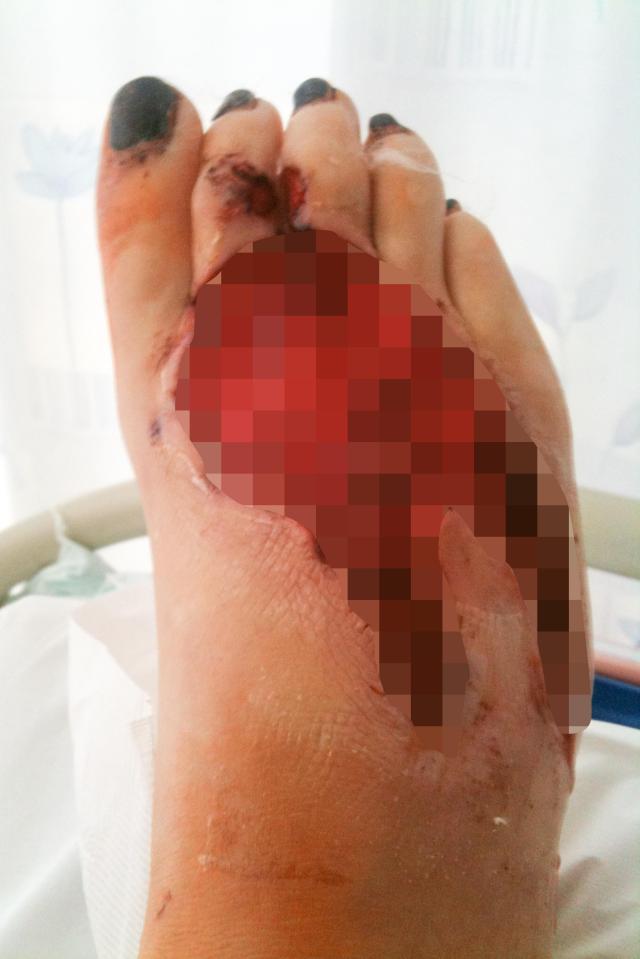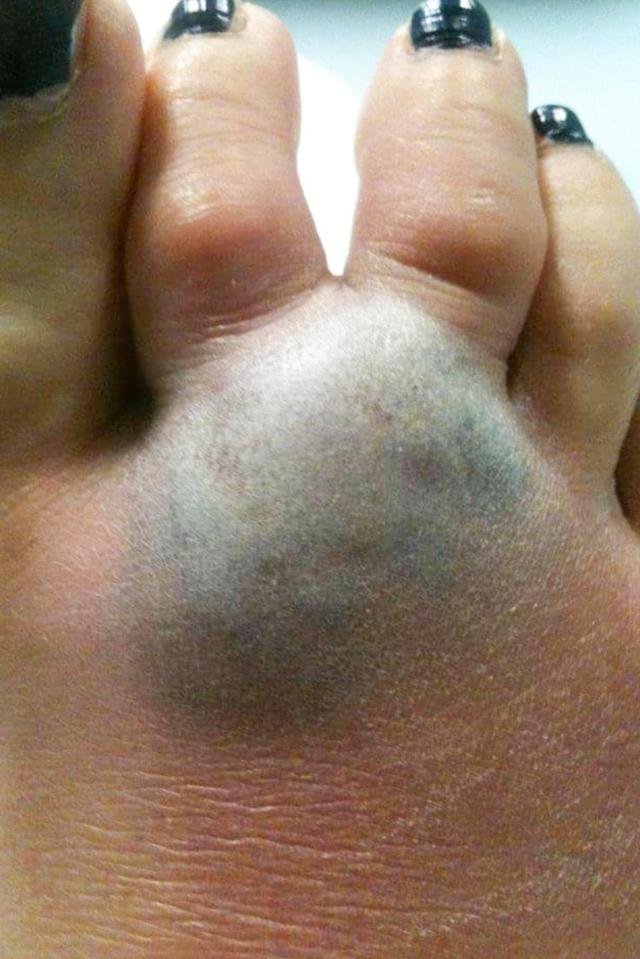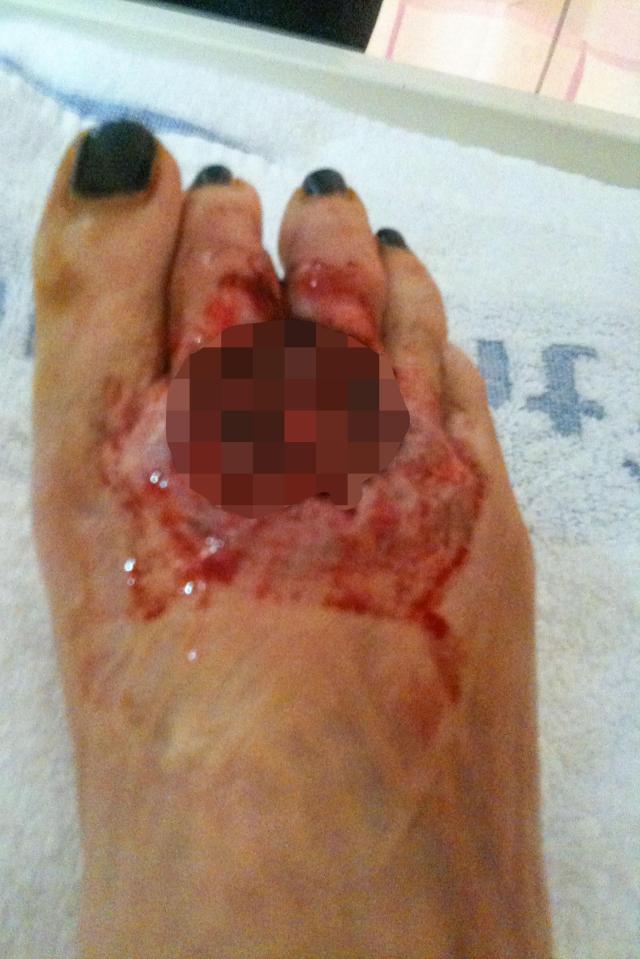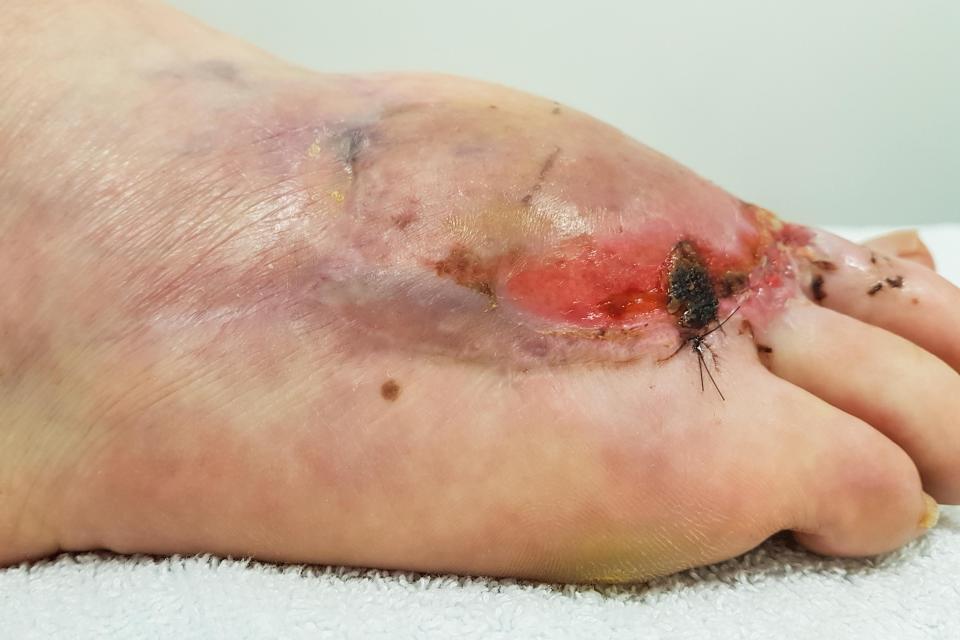Mum left with gaping wound on her foot after mistaking rare ‘flesh-eating’ bug for an INSECT BITE
Nicola Lightfoot, 40, thought she'd been bitten on holiday in Wales but two years later doctors discovered the true cause of her pain
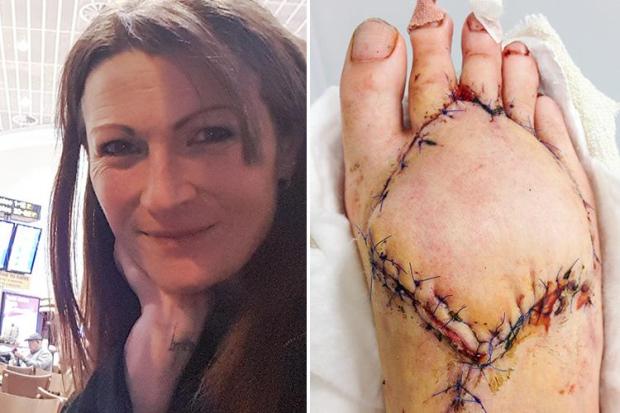
A MUM was left with a gaping hole in her foot after a "flesh-eating bug" ravaged her body for two years before it was detected.
Nicola Lightfoot thought she had been bitten by an insect on a caravan holiday in Wales, back in 2012.
But the "bite" soon developed into a deadly wound, leading experts to diagnose the 40-year-old with pyoderma gangrenosum syndrome - an auto-immune disease that ate away at her flesh.
It took six years for the wound to finally heal, after eating part of her foot and leaving a hole the size of a tennis ball.
The mum of three has undergone several ops to remove the infected tissue, as well as skin grafts to rebuild her foot.
And she's also had part of her bowel removed - the condition is linked to the inflammatory bowel disease, ulcerative colitis.
Nicola, from Warrington, Cheshire, said: "I thought I'd been bitten by an insect on the top of my foot.
"But by the next day the pain had got really bad and so I took some painkillers.
"Over the next few days the pain was getting worse and I couldn't find an A&E department in the area that was open, so I waited until we got home to visit my local hospital.
"By the time I got there the pain was so bad I felt like I wanted to cut my foot off completely and they began treating it with dressings and antibiotics.
"As time went on it just never seemed to heal and they tried everything, IV antibiotics, medication for cellulitis and I had several operations to clean out the wound.
"It would get better every so often but never really went away."
Nicola's wound became so bad that she was forced to have time off work as a lab technician in a haematology department, and was eventually left housebound.
A RARE SKIN CONDITION THAT CAUSES PAINFUL ULCERS
PYODERMA gangrenosum can appear suddenly, often a small pimple will be the first sign.
The skin then breaks down the pimple, bump or blood blister into a painful ulcer.
The ulcer can then grow fast and multiply, with several cropping up in the same area.
The condition typically affects the legs, but can appear on any area of skin.
It's a serious condition that can progress fast, so it's important to see your GP ASAP if you fear you've got it.
People with these conditions are more likely to develop pyoderma gangrenosum:
- inflammatory bowel disease - including ulcerative colitis or Crohn's disease
- rheumatoid arthritis
- hepatitis
- blood cancer, including acute myeloid leukaemia
Once it's caught, the condition can be treated. But it can take some time and can leave scarring in the affected area.
While some may find it takes years to heal, others will find the condition clears up quickly.
To find out more see the for info.
She was looked after by her ex-partner and older daughter, Sadie, now 14, but the issues of her condition placed a strain on the relationship and eventually caused the couple to go their separate ways.
Nicola said: "It was very depressing time, my partner was having to be mum, dad and carer and it took its toll.
"The kids have been amazing and Sadie, who was only nine at the time, would cook for me.
"I would sleep on the sofa because it was hard to get up the stairs and he [her ex-partner] just couldn't cope with the stress."
Nicola also suffers with colitis which is often linked to PG syndrome and had an operation to remove her bowel.
She also underwent an operation in March to correct and rebuild her foot using skin and blood vessels from her hip and is now hoping that she will be able to lead a normal life again.
She said: "It's completely changed my life and what I wear.
"If I went to a dinner party I would have to wear trainers as heels or sandals would be out of the question.
"There has not been a lot of research into the condition but since speaking to others it amazing how many people are suffering or are struggling to get a diagnosis."
Dr Anton Alexandroff, a consultant dermatologist and British Skin Foundation spokesman, said: "Pyoderma gangrenousum is an inflammatory autoimmune skin condition which manifests as very painful and rapidly enlarging necrotic ulcerations which are difficult to treat.
MOST READ IN HEALTH
"Ulcers are usually on the legs and this condition is caused by the overactive immune system.
"Pyoderma gangrenousum affects both men and females and is more common after age 50.
"It’s associated with other autoimmune diseases such as rheumatoid arthritis and also with blood cancer such as leukemia.”
We pay for your stories! Do you have a story for The Sun Online news team? Email us at [email protected] or call 0207 782 4368. You can WhatsApp us on 07810 791 502. We pay for videos too. Click here to upload yours





